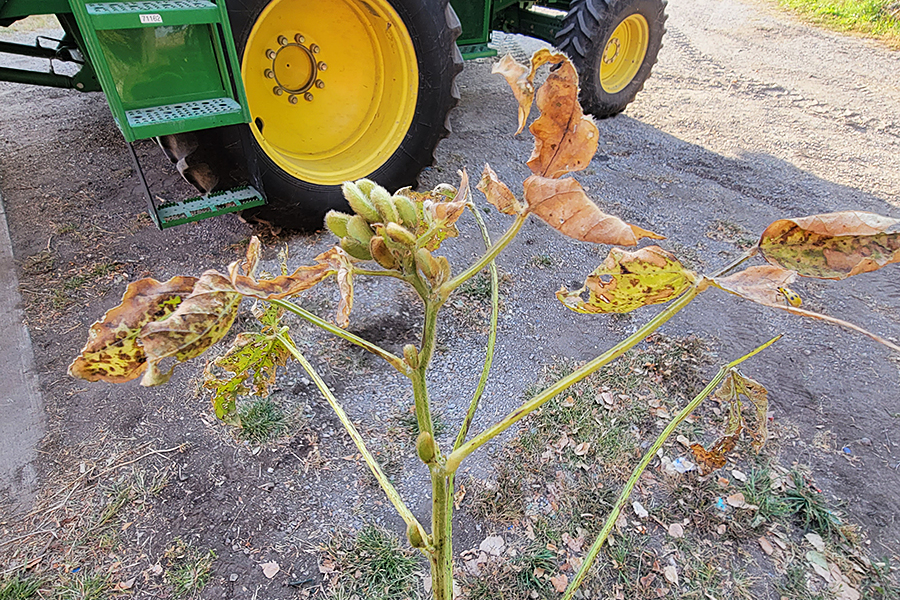Unusual Soybean Disease Observed in Northcentral Iowa
Margaret Smith, PhD, and Jake Hansen | Agronomists, Albert Lea Seed
The odd soybean plant pictured above, with pods clustered on the topmost node, was pulled from a soybean field in Northcentral Iowa this fall during harvest. What’s going on here? This “topknot” podding pattern, with lower buds aborted during development, is characteristic of Tobacco Ringspot Virus (TRSV). TRSV is fairly common in North Carolina, but not in the Upper Midwest. This year, though, it has been spotted all over the upper Midwest as far north as North Dakota, with many observations coming from Iowa, Nebraska and southern Minnesota. The good news for our Iowa grower is that he only noted this one plant infected in his field.
Tobacco Ringspot Virus moves from the south to the Northern U.S. via wind or is carried in infected seed. It’s then vectored to soybeans either by arthropods—such as thrips, grasshoppers, or aphids—or via dagger nematodes. Observations in the Upper Midwest this year were that plants initially colonized by soybean aphids were also the plants that then showed TRSV symptoms. It causes a systemic infection, typically moving from infected leaves to the roots. It rarely moves from the roots to the leaves. This virus is sap transmissible and is at greater risk of moving from young leaves than from mature leaves. Hot, dry weather contributes to disease development.
Tobacco Ringspot Virus changes the reproductive mode on the plants that it infects, causing sterility and lowers seed yield. Other symptoms may include plant and root stunting, brown discoloration of inner stems, and distorted leaves with ringspots. Pod development is poor in infected plants. Pods may exhibit dark spot and drop early. Stay-green of infected plants is sometimes observed in mature fields.
Yet another soybean disease on the horizon seems daunting, but even though TRSV is fairly common in North Carolina, yield losses are generally insignificant.
The main control for TRSV is to use virus-free seed and avoid growing soybeans in fields with a history of the disease. Avoiding fields with dagger nematodes can also help prevent some transmission. It hasn’t been documented, to date, that reducing populations of soybean aphids is an effective control measure.
Resources:
- Tobacco Ringspot Virus, Soybean Research & Information Initiative/North Central Soybean Research Program
- Tobacco Ringspot Virus of Soybeans, North Carolina State University
- Tobacco Ringspot of Soybean, Crop Protection Network
